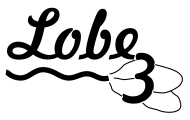Lobe 3
Previous projects


Highlights
- Database of quantitative information on lobe elements, lobes, and lobe complexes from selected proximal to distal to pinchout, and axial to marginal positions. This includes: length: width ratios tied to palaeoflow, amalgamation length: width ratios tied to palaeoflow, down dip and along strike facies changes at bed and bed-set scale, distribution and type of flow barriers (linked debrites and siltstones), and volumes of lobe elements and lobes.
- Process-based numerical forward modelling, with quantification of controlling factor combinations that could reasonably have produced the measured geometries, grain size range, etc. Autogenic lobe formation based on conceptual models developed from outcrop
- A 530m-long full cored research borehole from the Laingsburg depocentre through Units A and B, culminating in a facies and facies association atlas, with downhole recognition criteria for identification of lobes and lobe complexes.
- Initial quantitative comparison study of modern and recent lobes from different settings, with discussion on similarities and differences of lobe dimensions
Publications
Prélat A; Hodgson DM (2013) The full range of turbidite bed thickness patterns in submarine lobes: Controls and implications, Journal of the Geological Society, 170, pp. 209-214. DOI
Groenenberg RM; Hodgson DM; Prélat A; Luthi SM; Flint SS (2010) Flow-Deposit Interaction in Submarine Lobes: Insights from Outcrop Observations and Realizations of a Process-Based Numerical Model, Journal of Sedimentary Research, 80, pp. 252-267. DOI
Prélat A; Covault JA; Hodgson DM; Fildani A; Flint SS (2010) Intrinsic controls on the range of volumes, morphologies, and dimensions of submarine lobes, Sedimentary Geology, 232, pp. 66-76. DOI
Prélat A; Hodgson DM; Flint SS (2009) Evolution, architecture and hierarchy of distributary deep-water deposits: a high-resolution outcrop investigation from the Permian Karoo Basin, South Africa, Sedimentology, 56, pp. 2132-2154. DOI



